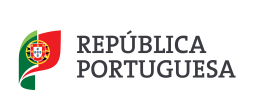CITAR has grown in 2018-2023 and envisions the near future as a consolidation of its research lines and activities and, going a step further, adapting its principles in light of recent technological and epistemological challenges. The strategic plan for the next 5 years thus encompasses a central vision of 4 guiding principles, which will develop and deepen our research. From them, general objectives and an activity plan will emerge.
1) ARTISTIC PRACTICES – RESEARCH, CREATION AND CONSERVATION. As a starting point, we understand artistic practice as an artistic research process and a tool for knowledge production. Artistic research is thus critical to understanding the process of research and production of artwork within the artist’s agency. In this context, artistic research can be understood through the artwork of this artist (research-action) and the place of the researcher in these practices (investigation into processes and modes of production). Finally, in the context of interdisciplinary knowledge, we foster an understanding of the conceptual, performative, material, and documentation dimensions of artworks and their cultural complexity, according to the epistemologies of conservation-restoration.
2) METHOD AND TECHNOLOGY OF ARTISTIC PRACTICES AND CONSERVATION. In the field of artistic production, and in a Centre that also interprets this as a technological practice, we intend to explore the potential provided by the development of new production tools, materials research, and technological models. Our post-disciplinary approach reflects on the possibilities of intersection between art, science, and technology, in a research context where methods, techniques, technologies, and artistic supports including creative data, laboratory fabrication technologies, and immersive and augmented environments are discussed and analysed. Special emphasis will be placed on the urgency of AI in the context of these emerging technologies, exploring concepts of human-machine co-creation and the debate on the ethical implications and risks associated with these technologies and tools. In the same context, the aim is to investigate the development and adaptation of advanced digital technologies for cataloguing, documenting, monitoring, and experiencing models (digital archives, 3D modelling, virtual restoration and VR applications), to reflect on material and technological obsolescence, and to study the materiality of works, their evolution and relationship with environmental, urban, and societal factors.
3) CURATORIAL RESEARCH AS A CRITICAL PRACTICE. Parallel to artistic practice, curatorial research emerges as a process of critical understanding of historical and/or current phenomena in the artistic field (cinema, visual arts, sound art, new media art, photography) and the discourses produced by them (ecology, decolonial thinking, new ontologies and epistemologies, community, questioning of the new digital humanisms). As research and practice, curatorial activity seeks to understand the connections between these phenomena and critical thinking, with relevance to technological changes and the discussion of the ontology of these phenomena in artistic contexts. On the other hand, it is also important to define and operationalise the modes of relationship between the artwork and audiences inherent to the concept of curation, both in the organisation and modes of reception of artistic works, in dialogue with the community of spectators, and on the impact of curatorial activity at the intersection with documentation and artwork conservation practices. We also consider critical analysis of the phenomenon of AI as a model for understanding the world and artistic practices to be crucial.
4) SUSTAINABILITY AND IMPACT OF ARTISTIC OBJECTS AND PROCESSES. If artistic production engages with reality(ies) from critical perspectives that aim to produce knowledge, research, creation, and conservation of the same must also consider the impact art generates on society and the sustainability of its objects and processes. By understanding the changes caused by climate change, it is important to research models for sustainable artistic practice, and green and sustainable conservation (preventive practices and green technologies). Management models of artistic production methods (cultural and creative industries) will also address sustainability. Understanding phenomena of artistic reception will culminate in artistic practice and curation, promoting policies of reflection about our communities. In this context, investigation of artistic intervention in the context of education aims at the development of (new) audiences, the sustainability of communities and regions, the promotion of diversity and empathy. The artistic encounter will be an opportunity to stimulate participatory citizenship and public cultural spaces, regarding heritage management and decision-making in conservation and restoration.




